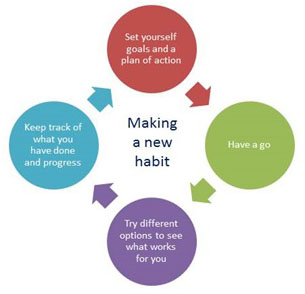When joint movement hurts an understandable instinct is to limit movement. Contrary though it may sound, you need to go against your instinct. Exercise and physical activity are among the best treatments for the management of the symptoms of osteoarthritis (OA), especially for the relief of discomfort and pain associated with the disease.
Exercise and physical activity
Exercise is good for everyone but for people with OA it is a key treatment option. Exercise is a vital part of keeping joints healthy and mobile.
A beneficial exercise plan can be as simple as increasing general physical activity in your everyday life. Daily activities such as taking the dog for an extra walk, signing up for a fun, not too strenuous exercise class, or parking your car farther away from a destination and finishing your journey on foot can contribute significantly to an exercise plan.
When it comes to more focused exercises seek professional advice from a physical therapist or exercise specialist. Following this recommendation will make sure your exercises are appropriate for the relief of your particular symptoms. You want to be sure you start an exercise program at the right level. You want to be sure you pace yourself by starting slowly and increasing your activity as you become stronger and fitter. Appropriate pacing will avoid aggravating your symptoms.
An exercise program that builds and strengthens the muscles around joints affected by OA is very beneficial. Strong muscles better support and take pressure off painful joints, improve balance, and lessen the feeling of giving way. As well as a tailored exercise program, a balance exercise program worth considering is t’ai chi that has been proven to improve muscle tone, flexibility, and bone density. Strengthening exercises can be done using a variety of aids: weights or dumbbells, resistance bands, or body weight.
- Stretching and flexibility exercises aim to improve the range of movement of your joints and muscles. Exercises can include muscle stretches, t’ai chi, and yoga.
- Water exercises, known as hydrotherapy, could also benefit you. The support provided by the water takes pressure off painful joints as you perform water aerobic exercise. Walking in water, which requires you to push against the resistance of the water, burns more calories and helps in a weight-reduction exercise plan.
- Aerobic exercises that keep your heart and lungs strong are always a good idea. Aerobic workouts will develop your stamina, build up your energy level, and exercise your joints and muscles. Walking briskly, cycling, and swimming are activities that increase your heart rate. Regular aerobic workouts can also help as part of a weight management program. Exercising on a stationary bicycle has several advantages. As well as taking pressure off your joints while you exercise them and burning up calories as you peddle, you can cycle regardless of weather conditions. In other words, you have no excuses to stop you getting on your bike!
Stick with your exercise program!
We all find it difficult to develop new habits but exercise is only beneficial if you do it! Like many New Year resolutions, our best exercise intentions can fade over time. We are good at finding reasons not to exercise be they time constraints, convenience, diminishing enthusiasm, or cost reasons. Any one of these can make sticking to an exercise program a challenge.
Fortunately there are many things you can do to help keep going with your exercise program. Consider these approaches that do not involve signing-up with a costly gym.
- Set yourself short and long term goals about what you would like to achieve.
- Plan how, where, and when you are going to exercise.
- Set reminders to do your exercises.
- Keep a diary of when you do your exercises.
- Join an exercise class or group.
- Get a friend on board to exercise with you.
Be persistent. Above all, do not become discouraged.

Watch your weight
Being overweight is a risk factor for developing OA, especially in the knees or hips. Excess pounds are also linked to a worsening of symptoms. But how do you know if you are overweight? You need to know your body mass index (BMI), a commonly used index of a weight-for-height relationship. Your BMI is determined by taking your weight in kilograms and dividing that number by the square of your height in meters (kg/m2). The World Health Organization (WHO) defines overweight as a BMI greater than or equal to 25 and defines obesity as a BMI greater than or equal to 30.
Excess weight puts increased strain on joints. Losing even a small amount of weight can make a big difference in your OA symptoms. Research has shown that people should aim to lose at least 5% of their body weight and ideally 10%. A combination of dietary advice and lifestyle modification, which includes an increase in physical activity, is recommended. Some people find seeking professional advice beneficial in managing their weight. Cases of severe obesity warrant consideration of bariatric weight loss surgery.
While it can be difficult to change diet and exercise habits and make them stick, this diagram shows some steps and tips to help you to increase your likelihood of success.
